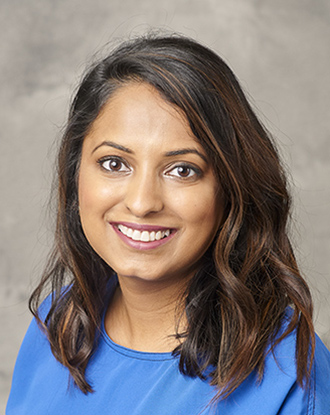Three Ways to make the most out of a primary care visit
 Communication is key… so it certainly helps that this doctor is fluent in four languages!
Communication is key… so it certainly helps that this doctor is fluent in four languages!
When Dr. Priyanka Naik started medical school, she thought she wanted to be an OB-GYN doctor. But during her fourth-year clinical rotations, she realized she didn’t like being so specialized and that another field better aligned with her values: Family Medicine.
“I really enjoyed working with all ages and realms and wasn’t ready to give that up and limit myself to a specific population,” she says.
Dr. Naik now practices at Pacific Medical Centers (PacMed) Northgate, but she first fell in love with medicine in high school when she volunteered in an Urgent Care registration department.
“I got to witness first-hand how the physicians cared for everyone, no matter who walked through the door. It really inspired me to get into medicine,” she says. “As a Family Medicine physician, I’m able to provide care for anyone and everyone, regardless of their age, gender or condition.”
Making the most out of a doctor’s visit
Visiting with your primary care doctor can be stressful, and too often patients leave the doctor’s office confused or unsatisfied. Dr. Naik has some advice to make sure doctors and patients achieve comprehensive care:
- Take time to find a good fit: “I encourage patients to do their research and find a physician who provides care that aligns with their beliefs and goals,” says Dr. Naik. She learned a lot about doctor-patient relationships from one of her Family Medicine residency mentors. “He taught me to be culturally sensitive when caring for my patients and incorporate their social and cultural beliefs as I care for them.” Dr. Naik was born in India and moved to the United States when she was 13, so she’s familiar with a variety of cultures. She is fluent in English, Hindi, Urdu and Punjabi. “I definitely have some patients who find comfort in knowing their concerns are addressed directly, without losing anything in translation.”
- Make a list: “I make a list, especially when I’m working with patients who have a chronic illness, and I encourage my patients to do it too,” Dr. Naik says. At the start of each visit, whe and her patient go over both lists and decide which concerns to address first.
- Ask questions: “Questions empower patients to be part of the decision-making process,” she says. Think of primary care as a partnership, with both doctor and patient involved in finding solutions.
“Medicine is a very gratifying field. I enjoy challenges and problem-solving, and with each patient I learn something new about a medical condition and about myself,” Dr. Naik says. “By listening to my patients and learning about their lives, I build strong patient-physician relationships and provide higher quality care.”



